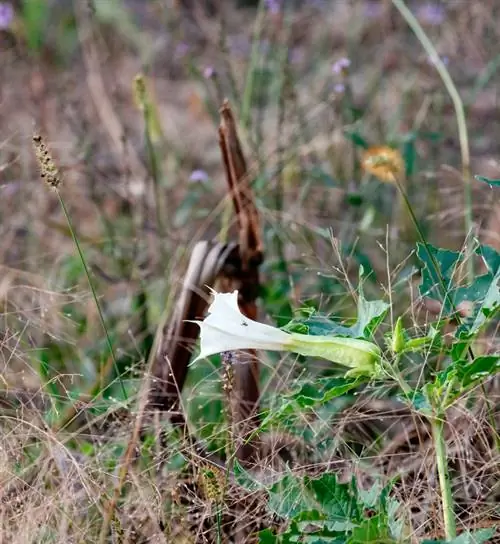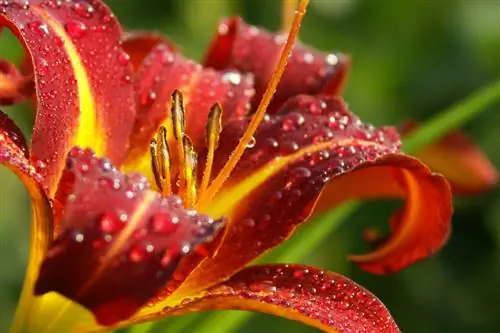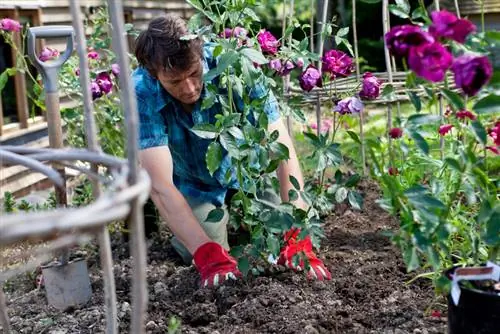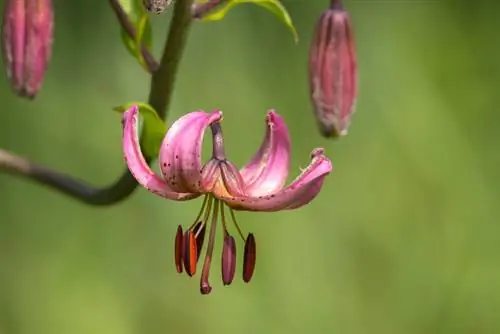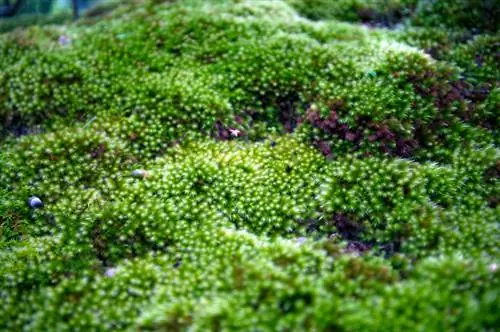- Author admin [email protected].
- Public 2023-12-16 16:46.
- Last modified 2025-01-23 11:20.
The datura (Datura stramonium) has been used by humans for more than two millennia due to the toxins contained in all parts of the plant and their sometimes hallucinogenic effects. In contrast to the angel's trumpet, the flower funnels, which are upright and open in the evening, are a special feature and are therefore grown in many gardens.
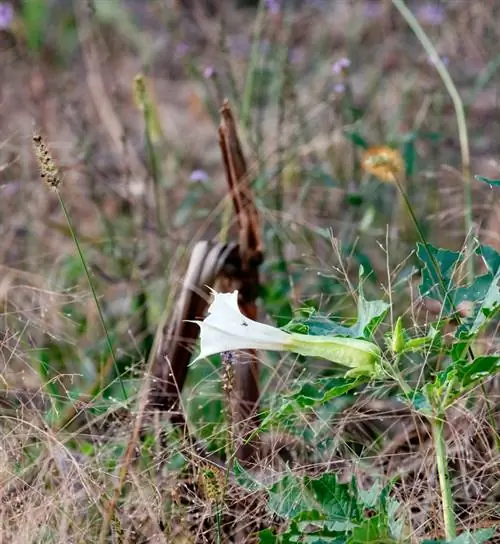
How and when should you plant datura?
To plant Datura (Datura stramonium), the seeds should be sown directly outdoors between April and June in a well-drained substrate rich in lime and nitrogen. Choose a location in full sun for optimal growth and flowering.
What are the characteristics of datura plants?
The now almost cosmopolitan variety Datura stramonium grows bushy and upright as an annual plant. After the flowering period, the egg-shaped seed capsules with their evenly distributed spines develop from the mostly white, cup-shaped flowers. The smell of cooked chickpeas, which most people find unpleasant, does not come from the flowers of the datura, but rather from the green leaves. Colloquial names for the datura are:
- Devil's Apple
- Pricknut
- Radweed
- Screwweed
- Asthma herb
Which location does the datura prefer?
The datura is relatively rare in nature; it prefers loose and nitrogen-rich soils. It can sometimes be found on wasteland, on piles of rubble and on roadsides. It can also spread through self-sowing in vegetable crops as a problematic arable weed. So that the annual plants can produce numerous strong flowers, you should cultivate them in a location in the garden that is as sunny as possible.
How can the datura be propagated?
As an annual plant, the datura is usually only propagated by sowing.
When and how is the datura sown?
Datura seeds should be sown directly outdoors in a well-drained substrate between April and June. As a rule, these germinate without any problems, but they need a relatively open area due to their light requirements. Once the datura has been settled in a suitable location, it usually reproduces in the following years through self-sowing without the gardener's intervention.
When does the datura bloom?
The datura generally blooms in this country from July to October, although the exact flowering time can vary due to factors such as the location or the time of cultivation. In addition, the flowering period of individual flowers is relatively short, but several flowers are formed one after the other.
In which substrate should the datura be cultivated?
The optimal substrate for the datura has a high lime and nitrogen content. In addition, there should be enough moisture and nutrients in the substrate if the datura is to grow vigorously and produce many flowers.
Tip
Since the entire plant and its seeds are very poisonous, datura should not be planted in gardens with children or pets.

